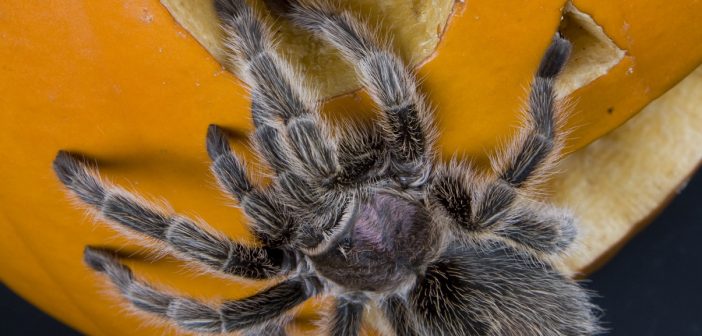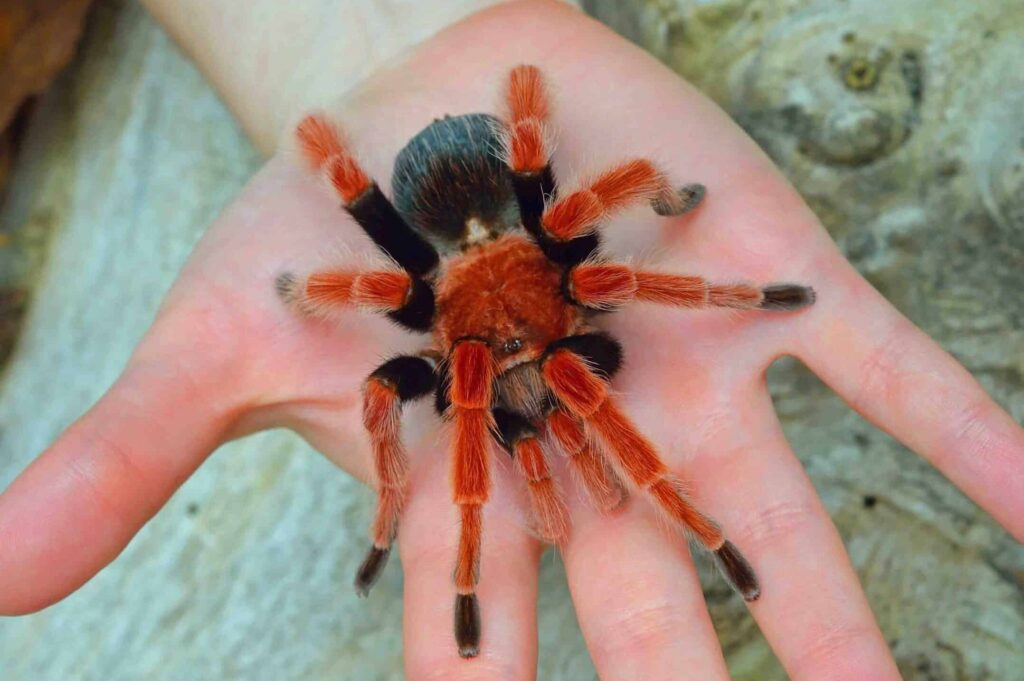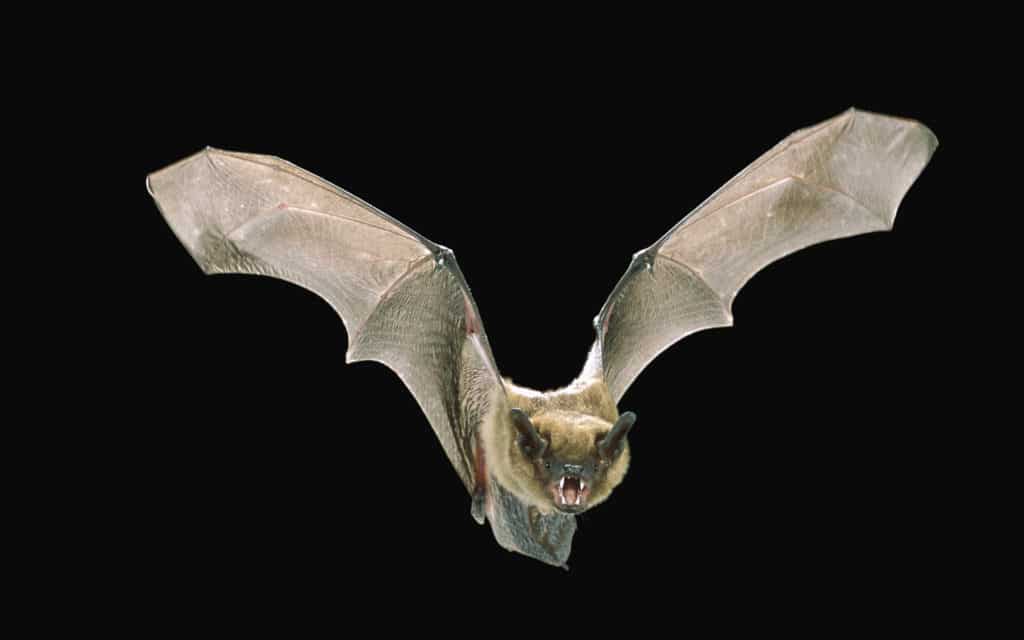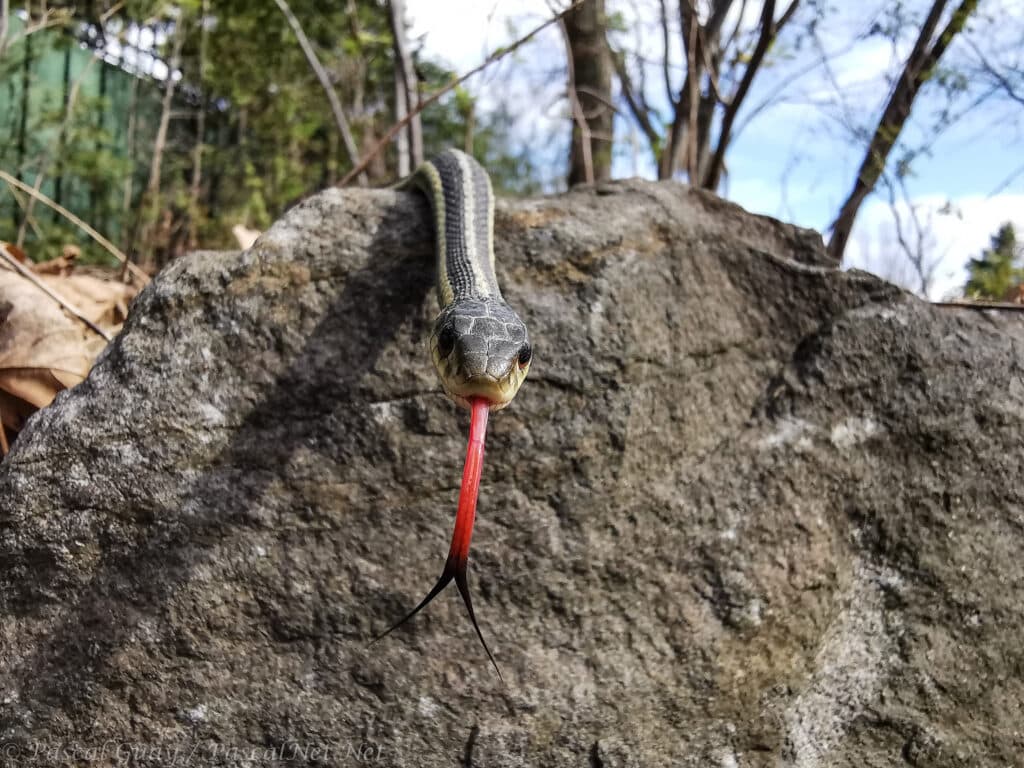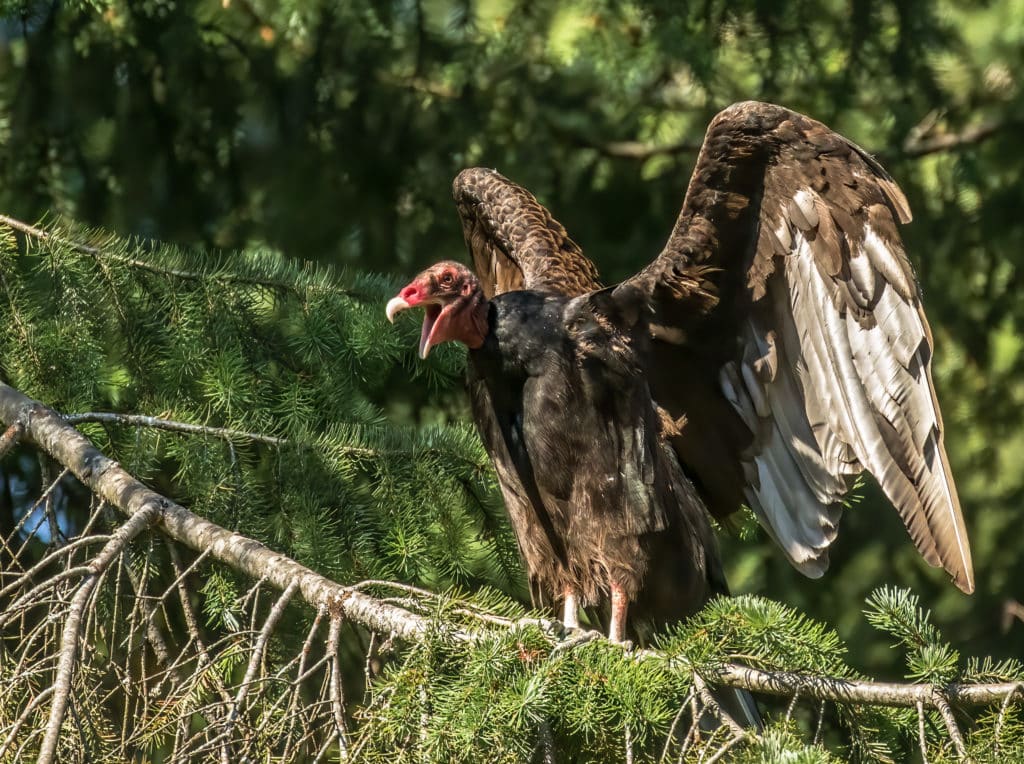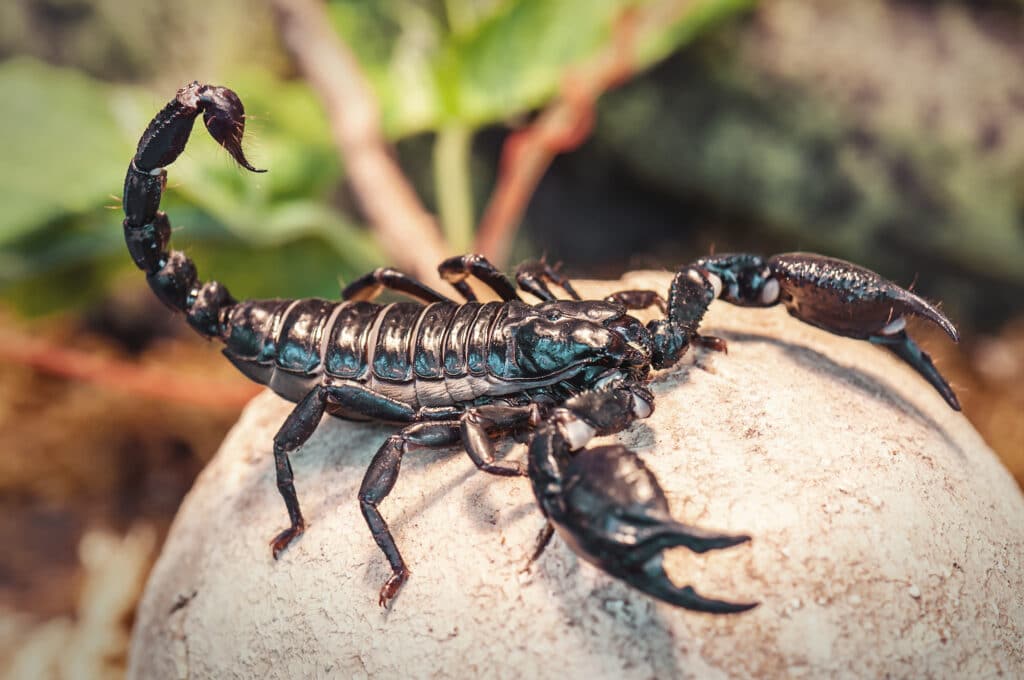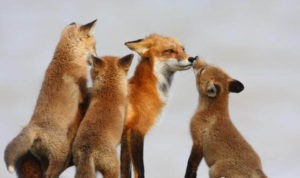Halloween’s scariest wildlife are, indeed, creepy. But prepare to be surprised by what you learn about them (in a good way!)
Tarantulas – creepy-scary
Tarantulas are scary-looking and sometimes scary big—up to 12 inches (30 cm) across! Would you want to meet one on a dark and stormy night? Or even a bright, sunny day? You may not want to hold one, but their bad reputation is undeserved. That’s because tarantulas don’t bite unless they have to and will retreat, if possible. If forced to defend themselves, the bite is usually no worse than a bee’s sting. There’s no record of a human ever dying from a tarantula bite. They’re beneficial wildlife because they feed on sowbugs, pillbugs, and other garden pests. They’re also a popular pet, but make plans for them in your Will—females can live forty years! In the United States, they’re found in the South and West. Learn all about spiders
Bats – scary night-fliers
Bats are known as evil and dangerous. With saliva dripping off razor-sharp teeth, they silently wait for us to step into the pitch black of the night so they can swoop down and drain our blood. Mwahahaha! Or, at least, get tangled in our hair! But, no, those are myths. Bats are harmless, non-aggressive eaters of insects and fruit, with no interest in humans. Mexico and South America have the only three blood-drinking bat species in the world, but even those don’t target humans.
Bats are very beneficial. Those that eat insects feast on such pests as mosquitos, gnats, flies, and some of agriculture’s most damaging insects. A single bat consumes up to six thousand insects per night! In a controlled laboratory setting, Little Brown Bats, Myotis lucifugus, gobbled up 340 mosquitoes per hour or 890 fruit flies per hour.1 Nectar-eating bats do their part by helping to pollinate plants. And fruit-eating bats, which inhabit tropical regions, are vital to the continued existence of some crops. Learn all about bats
Snakes – scary on the ground
Snakes are slithery, alien-looking, always startling, and the bigger, the scarier. But did you know that almost all snakes in the United States are harmless to humans? Yes, they’ll bite, but only when they’re startled or in self-defense. In the U.S., just three kinds are venomous, and even those aren’t typically aggressive. In fact, all snakes are afraid of humans and want to keep away. Of course, we don’t want venomous ones living too close to our houses, but snakes are beneficial because they help control rodents and other pest populations. As for their continually flicking tongue, they’re using it to “taste” their environment through chemical receptors located there. The scary-looking garter snake shown above is harmless and just tasting whatever molecules are in the air, including those of the human holding the camera. Learn more about snakes
Vultures – scary scavengers
Have you ever seen huge birds slowly circling in the sky? They’re searching for dead or dying animals. Although harmless to humans, people still fear them because they’re large and predatory, go about in flocks, and are considered disgusting because of what they eat, including roadkill. They’re also thought to spread diseases when, in truth, they help prevent them: imagine if all dead animals were left rotting on the ground, and all the viruses, bacteria, and other pathogens contained in them were dispersed into the environment. Well, vultures eat all that, and it’s gone for good. The U.S. has three species: Black Vulture, Coragyps atratus; Turkey Vulture, Cathartes aura; and the California Condor, Gymnogyps californianus. Learn more about birds
Scorpions – just plain scary
Scorpions are uber-disturbing! Look at those claws, and that stinger looks seriously wicked! Isn’t it fortunate that they aren’t aggressive toward humans? Their venom is meant to quickly immobilize prey, and they don’t sting humans without provocation. In the U.S., there are roughly sixty species, and some don’t sting at all. Those that do can deliver a painful bite, but only one, the Bark Scorpion, Centruroides exilicauda, found in the desert Southwest, has venom potent enough to cause serious symptoms. Unlike most invertebrates, scorpions give birth to live young and care for them. Scorpions are beneficial distant cousins to spiders and feed on insects, spiders, other arthropods, and sometimes even small mice.
1 Griffin, Donald R.; Webster, Frederic A.; Michael, Charles R. (1960), “The echolocation of flying insects by bats,” Animal Behavior, Volume 8, Issues 3–4: 141-154, as extrapolated on https://en.wikipedia.org/wiki/Little_brown_bat.
Wild Turkey: more than a dinner table centerpiece
Insects: 101

